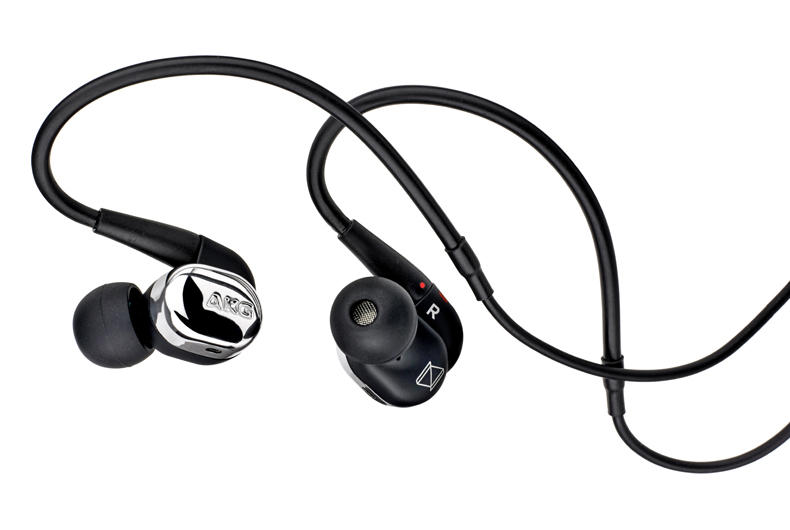 High-end earphones – often known as In-Ear Monitors, or IEM’s – have been around for a number of years now, but have remained much lower profile (at least in the mainstream) than full size headphones. Part of the reasoning for this seems to spring from the argument that such small earbuds are incapable of vast improvements as their price increases, and that such high priced ‘buds are not worth the money. Finally, it looks like this standpoint is being put to bed, as more and more people look to in-ears for their daily listening on the go.
High-end earphones – often known as In-Ear Monitors, or IEM’s – have been around for a number of years now, but have remained much lower profile (at least in the mainstream) than full size headphones. Part of the reasoning for this seems to spring from the argument that such small earbuds are incapable of vast improvements as their price increases, and that such high priced ‘buds are not worth the money. Finally, it looks like this standpoint is being put to bed, as more and more people look to in-ears for their daily listening on the go.
The latest company to test their mettle at a loftier price point than normal is AKG, the Austrian brand that have had their fingers on the pulse of the headphone market for over 60 years. Whilst not the most expensive earphones in their range (the might K3003i fill that particular position), the N40 is aimed at showing what taking a step up can do to your portable listening, with a few unique features in particular up its sleeve. Let’s take a look at how it stacks up…
The premium product feel is evident even before removing the N40 from their packaging, as AKG lay on the style with some fancy casework. Inside the box is a range of accessories, all of which are welcomed and not superfluous, with four sizes of ear tips to accomodate all ear sizes, two connecting cables, with and without inline microphone, a flight adaptor, cleaning tool and, as one of the N40’s aforementioned tricks, three interchangeable ‘filters’, on which more later.
Whilst they’re an in-ear design, the N40 use an over the ear ‘hook’ mechanism to hold the earbuds in place. Used frequently in models that used on stage or in studio work, this cable design allows for a more secure fit, keeping the buds nicely in place when we tested them out. Other than that, the N40’s are par for the course. Their angled casing is fairly standard on in-ear designs these days, and there’s not much room to work with to make things looks any jazzier than they absolutely need to. The outer housing is finished in chrome but doesn’t look garish for it, and nothing else has been added for unnecessary ‘bling factor’.
Mention of the swappable filters above should have grabbed your attention, and they’re worth a more detailed explanation. Effectively a form of analogue equalisation, these small pieces of metal attach to the earphone casing and offer the user a choice of ‘Bass Boost, High Boost or Reference Sound’. Like your music with emphasis on the lower frequencies? Choose Bass Boost. Prefer a more brightly lit top end? High Boost it is. Want to hear things just as they’re recorded? Reference Sound is your go to. Far from being a gimmick, these easy to switch filters alter the sound enough to be a worthwhile addition to the overall package. That being said, our preference was generally for the Reference Sound option, but with certain genres or albums, a quick swap out to the other two options was well worth it.
As we settled down to some serious listening, we gave ourselves a number of options for playback. A Samsung Galaxy S6 and iPhone 6 were drafted in for standard playback, as was an Astell & Kern AK70. Knowing that high-end earphones OR headphones benefit from a strong source, we also used a Chord Mojo and Dragonfly Red to get an idea of what the N40 was really capable of. Sound quality straight from the phones was good, with plenty of detail and insight, as well as solid bass performance, but things changed very much for the better when we brought the Chord and Audioquest DAC’s into the fold, too. So, whilst they definitely weren’t essential for musical enjoyment, anybody considering a pair of the N40 would we well advised to demo them with a good quality separate DAC, too.
Playing back Radiohead’s The Numbers from latest album A Moon Shaped Pool, the AKG’s set out their stall early on. Straight from the Samsung’s headphone output, the N40 offered excellent instrument separation from this dense track, particularly when the string section comes to life midway through. The presentation erred on the side of slight top end brightness, but the sound wasn’t uncomfortable, the sense of clarity and openness making for a revealing listen. Throwing the Chord Mojo in between the two pushed the performance through the stratosphere, widening the soundstage, improving the bottom end and slightly taming the treble without losing any of its sparkle. This was true high-end sound!
Autechre’s latest work, Elseq 1-5 was up next. Effectively five albums released as one digital package, the four hours of music that makes up the work is challenging, absorbing and at times even playful. With so much happening throughtout the tracks, the N40’s would have to be on the ball at all times to keep up. Directly from the phone they did another good job, presenting Pendulu Hv Moda’s hefty bass wallops with substantial depth. All of the many microscopic threads were presented neatly, making it easy to hear into the mix. We’d have said there was little else to listen for until we switched the Audioquest Dragonfly Red in between the two. Now we had an even weightier showing from the bass, one that had true impact each time it hit. A greater sense of general space in the mix was audible too, with a panoramic perspective now evident.
If the above sounds like the AKG need a bit of a boost to hear them at their very best, then we’d actually say that’s probably true. When they were plugged into something that wasn’t the bog standard headphone output on a mobile phone they were truly excellent, giving unrivalled sound quality for their size or price. But even when plugged directly into either phone, they still offered brilliant imaging, detailed highs and punchy bass. If you partner them carefully, these AKG’s will see off any and all comers in the headphone arena at their price point. Give them an audition at your local Richer Sounds store if you want to hear what your music really sounds like!
Shop for Headphones with Richer Sounds.
Author: Chris, Liverpool store





